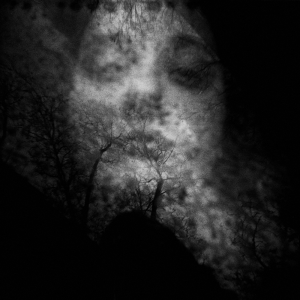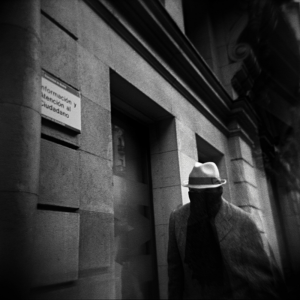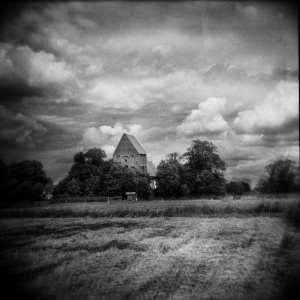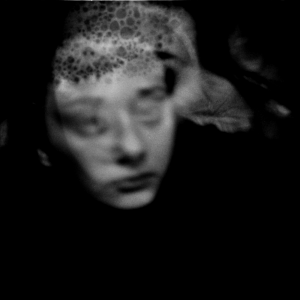2013-06-15
Jose Ángel González, Spanishgrass & more

Jose Ángel González
Jose Ángel González (no accent on the first name, please) was born in Santiago de Compostela on February 28, 1955. Spending most of his youth in Venezuela he returned to Spain at the age of 17.
For the past 30 years he has been a free-lance journalist, covering a broad range of the classic and modern media: spoken and written word, video and television, electronic adventures in cyberworld for official and private institutions or companies. In those three decades he has witnessed successive births, deaths and resurrections of magazines and papers but this hasn't taken away the fun and inspiration to go on writing. In his own words: telling a story, whatever the medium, is the most beautiful of the story.
Jose Ángel González is also a photographer, has exhibited his work in Madrid, Barcelona and San Francisco and has published some work in magazines. He likes photography as an expressive medium as pictures can be a workaround for when words aren't telling enough.
In 1986 he published a mockumentary in La Naval, a shortlived 'Atlantic movement' journal that he founded. It was a fable about Syd Barrett's alleged stay at the Oseira monastery. Throughout the entire piece the protagonist's name is misspelled as Barret, not Barrett. Not that anyone noticed. See: Spanishgrass, one year later.
Unknown to him the story turned into an urban legend and the Syd in Oseira rumour was repeated and extrapolated among Spanish Syd Barrett fans.
In 2002 he published a follow-up article on a (disappeared) blog in a series of hypothetical records. Here is where the Spanishgrass album was named for the first time.
This added extra fuel on the urban legend and blogs and forums picked up the 'news'. According to González he was not aware of this until he was contacted by Antonio Jesús from Solo En Las Nubes who made it his quest to search for the origins of the Spanishgrass myth.
In 2001 Jose Ángel González published a book: Bendita Locura, la tormentosa epopeya de Brian Wilson y los Beach Boys (Editorial Milenio, 2001) [Blessed Madness, the stormy epic of Brian Wilson and the Beach Boys].
Since March 2011 he lives in San Francisco (USA).

Antonio Jesús
Antonio Jesús has lived in Cambridge where he helped at The City Wakes festival (2008, already) and met several people of the pre-Floydian incrowd. His blog Solo en las Nubes is the starting point for Spanish speaking Barrett fans all over the world. In a series of so-called Self-Interviews he has highlighted several personalities of the past and present Syd Barrett world.
As a close collaborator of the Holy Church he decided to investigate the Spanishgrass hoax, go to the bottom of it and find the source of the urban legend. Not only he traced back the articles that started the legend but managed to interview the author, Jose Ángel González.
Antonio Jesús is co-author of El Tormento del Erizo (2012).

Jose Ángel González, a journalist
He is the author of much more than "Syd Barrett looking for celestial harmony in Oseira" and "Monastic Syd" (aka Spanishgrass).
Once we had found Jose Ángel González, we had no other choice then to ask about his article of La Naval... However, there were many other things to talk about as we had only seen the tip of an artist's iceberg.
What follows are the questions, what follows are the answers ...

About the [Atlantic] movement that started in Vigo... when was the time when you realized that those changes were going to stay forever?
Have they "stayed forever"? Their remembrance should be personal and not entrenched in a historical museum. I think that all these changes have now been usurped by the professionals of recuperation: politicians, artists in search for the holy grail of early retirement, mediocre artists, professional curators looking for patronage... They want to be awarded with an approved nostalgic blessing, they want to give expression of a comfortable and comforting situation...
I'm thinking of the shameful and manipulative exposition Desembarco de los 80 (Disembarking of the eighties, 2011 exposition remembering the Atlantic movement) that was mounted on lies for the greater glory, also financial, of its survivors... I don’t like the durability of this idea, although of course I am a human being and I have the right to worship my private saints.
[Note: for an explanation what the Spanish cultural and political Atlantic movement was about, please see: Spanishgrass, one year later.]
Where did you live and what did you do then?
When the Vigo movement hatched in the media I was living in Coruña. I don't call her the Galician A Coruña nor the Spanish La Coruña, I only use the feminine surname of the city, as she is the lady whom I love. I was working for the only Galician FM radio-station that played the Sex Pistols, Elvis Costello, Television, Patti Smith or the Ramones...
First the show was called Frenesí (Frenzy), later El lado salvaje (The wild side) and it was diffused by Radio Popular in Ferrol, but recorded in Coruña. Much later the show changed into Vuelo nocturno (Nightflight) on the FM station Radio Coruña-Cadena SER.
In 1980 I had returned from Madrid where I had been lucky enough to witness the first concerts of the groups that were liked by the [Atlantic] movement and I found out that Coruña was a wasteland where the people of my generation where listening to Emerson, Lake & Palmer in the best case and to Mercedes Sosa in the worst.
La Naval [the semi-official magazine of the Atlantic movement] was not the only project I was involved in. I also organised weekly rock concerts in a discotheque and co-managed two official rock contests for my city.
The initial musical tristesse that I had found was ameliorating, but not much.

From the artists of that fruitful era, which one do you prefer?
There is no doubt for me: Siniestro Total (Total Sinister). They were provocative and cultivated despite their rudeness and they liked black American blues, which was quite strange in Galicia, where everything coming from the USA was considered imperialistic, influenced as we were by our nationalistic blindness.
How did La Naval come into place? Where there other competing magazines? What made it so different?
A new style of magazines was more or less created out of boredom with the old ones. We worked for newspapers and radio-stations of A Coruña but it was hard to get some media attention in the city and to have our alternative agendas published. The La Naval magazine began with 100.000 pesetas I had put aside on a long-termed bank account, the result of an apartment sale belonging to my parents. I think it will be obvious what followed: I never recovered the money.
[Note: 100.000 pesetas is roughly 601€, 802$ or 510£. The value today would be at least the double as in the mid-eighties.]
How was the atmosphere between the collaborators of La Naval?
Although I stayed on the editorial board for all numbers it was not my thing. The magazine's editorial line was based on the alleged alternative Atlantic culture, as opposed to the Mediterranean one. It soon led to an attempt to make a sales brand out of Galicia and to sell it to the mainland. It gave expression to nationalism, rascally and low-fi perhaps, but nationalism after all.
And how did La Naval end?
In my case, with a hole in the bank, but others took profit out of it. For example, Radio Océano, a band created by two of our founding members, recorded an album that was paid by national radio, where its leadsinger was working, by the way.
What do you miss most about the movement?
There was a clan feeling that was not bad, but it was limited to our own small tribe with mutual masturbation among participating journalists. We were a Mafia, like any other.

Number "500" had the article about Syd Barrett visiting the Oseira monastery. Was this based on some urban... or better said: rural legend? How was the article conceived?
The story was born in me with the fascination I felt for Syd Barrett and his work. The article uses no legend as a starting point. It is my own personal fiction.
A few years ago the story, without direct references to the original article, resurfaced on the Internet. How did you react to that?
None whatsoever. La Naval only had a limited impact. Only now I have learned through you about the impact of the article, and I'm interested and proud. I find it very funny that an urban legend grew out of it that has been further associated with others or confirmed by others.
A few years after the publication of the La Naval article I wrote an extended and corrected version for a series about hypothetical records. It was published on a blog that eventually ended and added the lyrics of some of the songs from Spanishgrass.
Why did you choose Syd Barrett as the protagonist of this monastic adventure? And why Oseira?
Because Syd Barrett is one of my preferential musicians. Because Oseira is a place of great tellurian force and it seemed appropriate as a setting for this fiction. The summers of the English author Graham Greene in the monastery, the power of nature, the retirement, the prime nobility of those Cistercian monks... All that, my fragile memory recalls, had to do with the initial idea.
What music are you currently listening to?
I've never stopped listening to old blues (Charlie Patton, Howlin' Wolf, Bessie Smith...), Bob Dylan, King Crimson, David Bowie, The Beatles... I'm not seeking for new things. But what has excited me most recently is Wilco.
How did you get into photography?
I started taking pictures and developing them in a dark room in my teens, but I had never any other intention than doing some family snapshots. A few years ago, while recovering from an illness and with my first digital reflex camera, I started using photography as a form of therapy, to try to find the humanity that was fleeing from me. Quite naturally I went back to analog photography. And here I am: I have already stated a few times that I would like to have more time to pursue photographic projects. It is not easy ...

What brought you to the USA and San Francisco in particular?
To make a long story short, I was keen to leave Spain and its sadness behind.
In the 'Strike' collection your photos seem not to capture the moment but the spirit of those who appear in it. Is that the magic 'analog' touch? And in the 'Her Name is Holga' series you seem to carry away the dream. Were these pictures taken in th USA? What inspired you?
I can rarely explain a photo, and especially those on the street have been taken instinctively. Someone said that the photographer is, or should be, an emissary of his own sadness. I apply that story.
Strike photo series: http://joseangelgonzalez.net/section/303188_strike.html
Her
name is Holga photo series: http://joseangelgonzalez.net/section/303026_her_name_is_holga.html
Your blog is superb, in photographic work and in the texts you write. Do you think there is something in common? What accounts for your preference for black and white? When do you choose colour instead?
I see in black and white. Always has been. I do not pretend to be better or more arty: it's a spiritual condition.
And that romance with Holga? What does she has that others do not have?
The Holga camera is a simple, plastic toy, cheap and unsophisticated. I love flirting with her and I think she fancies me, as she returns miracles. I have over 50 cameras: if I have to choose just one, it would be the Holga.

What is Oraciones sucias (obscene prayers)?
It's a Tumblr, a scrapbook, a microblog... I have another as well: Hot Parade, dedicated to photos only. I also have two websites: joseangelgonzalez.com is my official site, I have recently rebuilt it after an accidental file loss. On joseangelgonzalez.net are those photos that embarrass me the least.
Do you have any artistic ambitions to further develop?
Just living and trying to be happy, which is already something.
To be continued...
© 2013 Antonio Jesús, Solo en las Nubes. Pictures courtesy of Jose Ángel González, Rafa Alcacer & Antonio Jesús. Notes & Introduction : the Holy Church of Iggy the Inuit. Translation mistakes, typos and all possible errors are entirely the responsibility of the Holy Church of Iggy the Inuit.
Many thanks to Babylemonade Aleph for rolling the ball in the beginning and Antonio Jesús for his incredible research. All (interview) pictures © Jose Ángel González.
♥ Iggy ♥ Libby ♥
Jose Ángel González can be found at the following places:
Blog:
http://joseangelgonzalez.com/
Photography:
http://joseangelgonzalez.net/
Flickr:
http://www.flickr.com/photos/bichito/
Oraciones
Sucias: http://oracionessucias.tumblr.com/
Hot
Parade: http://hotparade.tumblr.com/
Canto
de Caza (2010): http://cantodecaza.wordpress.com/
Soy padre de un hoax (I am the father of a hoax)

